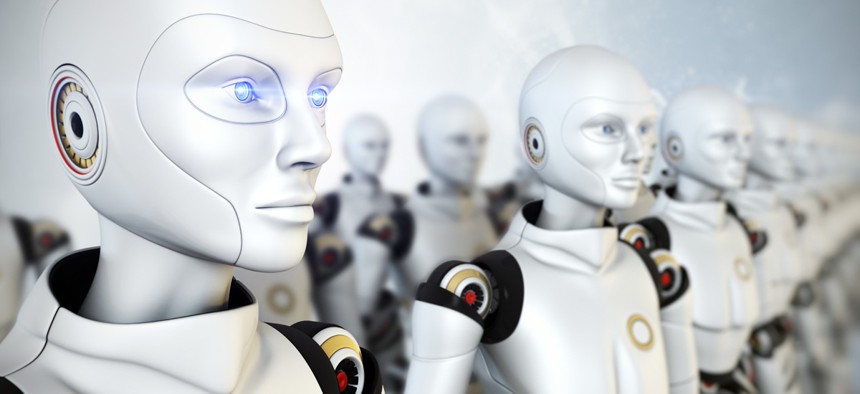Robots Are Learning How to Build Better Clones of Themselves

Tatiana Shepeleva/Shutterstock.com
Scientists at the University of Cambridge have created robotic natural selection.
In just about every dystopian film where robots have taken over, they’ve gotten to their dominance over humanity by being able to self-replicate and get better with each new model. Once they’ve become self-aware, they use their superior machine intelligence to make, faster, better, stronger versions of themselves. Scientists at the University of Cambridge have seemingly doomed us to this fate: They’ve designed a robot that builds baby robots, and uses natural selection to determine which one is best to make more of.
The team, led by Cambridge Engineering researcher Fumiya Iida, seemingly took inspiration from Darwin and his evolutionary theory to build a “mother” robot that can make “children” bots and determine which one has the best traits. The mother, an arm-shaped robot, built five sets of 10 children, using information from each round of building to make an even better baby bot. The mother looked at each robot and decided which ones performed their tasks the best, choosing, as the team called it, “the fittest” robots to base the next version on. The mother measured how far one of its babies could travel from its starting position in a given amount of time.
“Natural selection is basically reproduction, assessment, reproduction, assessment and so on,” Iida said in a release. “That’s essentially what this robot is doing—we can actually watch the improvement and diversification of the species.”
The team published their research in the journal Plos One. While most research into the field of evolutionary robotics is done through simulation, letting a computer complete millions of designs virtually, the team wanted to see if there was any variation between a simulated robot and real one. And it turned out, there was: The team discovered that letting a robot decide on its own resulted in more successful children.
“One of the big questions in biology is how intelligence came about—we’re using robotics to explore this mystery,” Iida said. “We think of robots as performing repetitive tasks, and they’re typically designed for mass production instead of mass customization, but we want to see robots that are capable of innovation and creativity.”
The research is part of Iida’s work on improving the way robots move, and is part of a trend of roboticists looking to nature for cues on how to design the future. It may, thankfully, be a while before we have a T-1000 banging down our door, hellbent on eradicating the human race. Iida thinks even human-shaped robots as a concept are still decades away. “It’s still a long way to go before we’ll have robots that look, act, and think like us,” Iida said. “But what we do have are a lot of enabling technologies that will help us import some aspects of biology to the engineering world.”
(Image via Tatiana Shepeleva/ Shutterstock.com)
NEXT STORY: How to See Invisible Infrastructure





